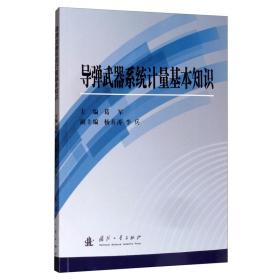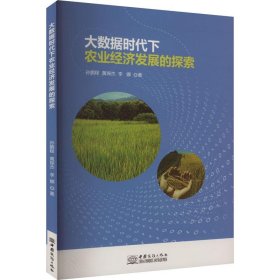
医学遗传学
全新正版未拆封
¥ 38.39 4.0折 ¥ 95 全新
库存2件
山东济宁
认证卖家担保交易快速发货售后保障
作者邵根宝;金洁;龚爱华
出版社江苏大学出版社
出版时间2023-12
版次1
装帧其他
上书时间2024-08-07
- 在售商品 暂无
- 平均发货时间 50小时
- 好评率 暂无
- 最新上架
商品详情
- 品相描述:全新
图书标准信息
- 作者 邵根宝;金洁;龚爱华
- 出版社 江苏大学出版社
- 出版时间 2023-12
- 版次 1
- ISBN 9787568417778
- 定价 95.00元
- 装帧 其他
- 开本 16开
- 页数 264页
- 字数 0.6千字
- 【内容简介】
-
本书以“遗传病”作为主线,介绍了医学遗传学的发展、前沿和展望,经典的遗传和表观遗传方式及其相关疾病,从微观层面探究基因和染体的结构、突变及相关的检测技术,以临床常见的遗传病例作为主体,介绍其主流诊断、技术和方法。医学遗传学是医学与遗传学相结合的一门边缘学科,是遗传学知识在医学领域中的应用。书稿中的医学遗传学理论和实践丰富和发展了遗传学。在广泛吸收和借鉴同类教材的基础上,书稿较为全面和系统地介绍了医学遗传学的理论与实践。 - 【目录】
-
contents
chapter 1introduction / 001
◎ 1. 1 the birth and development of geics and genomics / 001
◎ 1.2 categories of geic disease / 001
◎ 1.3 onward / 002
chapter 2chromosomal basis heredity / 004
◎ 2. 1 the human genome and the chromosomal basis of
heredity / 004
◎ 2.2 transmission of the genome / 012
◎ 2.3 human gametogenesis and fertilization / 018
◎ 2.4 the human karyotype / 022
◎ 2.5 medical relevance of mitosis and meiosis / 024
chapter 3patterns of single-gene inheritance / 026
◎ 3. 1 overview and concepts / 026
◎ 3.2 pedigrees / 029
◎ 3.3 mendelian inheritance / 031
◎ 3.4 autosomal patterns of mendelian inheritance / 032
◎ 3.5 x-linked inheritance / 040
◎ 3.6 eudoautosomal inheritance / 047
◎ 3.7 mosaicism / 048
◎ 3.8 parent-of-origin effects on inheritance patterns / 050
◎ 3.9 dynamic mutations: unstable repeat expansions / 051
◎ 3. 10 correlating genotype and phenotype / 055
◎ 3. 11 importance of the family history in medical practice / 057
chapter 4……
principle of clinical cytogeics / 060
◎ 4. 1 introduction to cytogeics and genome analysis / 061
◎ 4.2 chromosome abnormalities / 069
◎ 4.3 chromosome and genome analysis in cancer / 082
chapter 5chromosome disease / 085
◎ 5. 1 mechanisms of abnormalities / 085
◎ 5.2 aneuploidy / 086
◎ 5.3 idiopathic chromosome abnormalities / 091
◎ 5.4 the sex chromosomes and their abnormalities / 094
chapter 6multiple-factor inheritance / 108
◎ 6. 1 qualitative and quantitative traits / 109
◎ 6.2 familial aggregation and correlation / 111
◎ 6.3 determining the relative contributions of genes and
environment to plex disease / 114
◎ 6.4 examples of mon multifactorial diseases with a
geic contribution / 120
◎ 6.5 examples of multifactorial traits for which specific
geic and environmental factors are known / 127
◎ 6.6 the challenge of multifactorial disease with plex
inheritance / 135
002 / m edical g eics
contents
chapter 7epigeics / 137
◎ 7. 1 epigeic and epigenomic aspects of gene
expression / 137
◎ 7.2 gene expression as the integration of genomic and
epigenomic signals / 142
◎ 7.3 allelic imbalance in gene expression / 142
◎ 7.4 variation in gene expression and its relevance to
medicine / 148
chapter 8geics of cancer / 150
◎ 8. 1 neosia / 150
◎ 8.2 geic basis of cancer / 152
◎ 8.3 cancer in families / 156
◎ 8.4 familial occurrence of cancer / 169
◎ 8.5 sporadic cancer / 169
◎ 8.6 cytogeic changes in cancer / 173
◎ 8.7 applying genomics to individualize cancer therapy / 174
chapter 9geic variation in individuals and populations: mutation
and polymorphism / 180
◎ 9. 1 the nature of geic variation / 181
◎ 9.2 inherited variation and polymorphism in dna / 184
◎ 9.3 the origin and frequency of different types of
mutations / 188
◎ 9.4 types of mutations and their consequences / 192
◎ 9.5 variation in individual genomes / 196
◎ 9.6 impact of mutation and polymorphism / 197
◎ 9.7 genotypes and phenotypes in populations / 197
◎ 9.8 factors that disturb hardy-weinberg equilibrium / 202
chapter 10the treatment of geic disease / 211
◎ 10. 1the current state of treatment of geic disease /212
◎ 10.2spe considerations in treating geic disease /215
◎ 10.3treatment by the manipulation of metabolism / 216
◎ 10.4treatment to increase the function of the affected
gene or protein / 220
◎ 10.5gene therapy / 237
◎ 10.6precision medicine: the present and future of the
treatment of mendelian disease / 245
chapter 11geic counseling and risk assessment / 247
◎ ◎ ◎
◎11. 1 11.2 11.3
11.4family history in risk assessment / 247
geic counseling in clinical practice / 248
determining recurrence risks / 252
empirical recurrence risks / 257
references / 261
点击展开
点击收起
— 没有更多了 —












以下为对购买帮助不大的评价